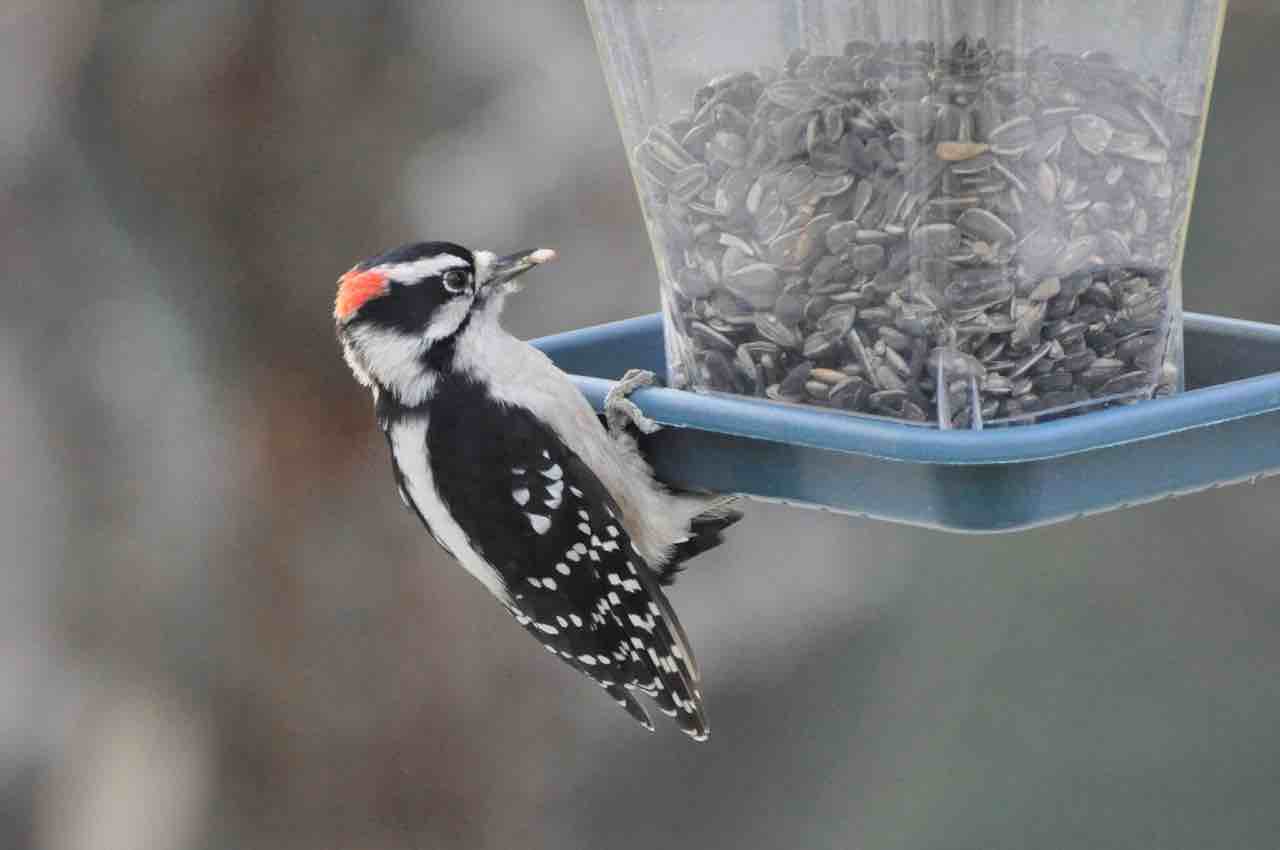It’s easy to attract downy woodpeckers. After all, they’re everywhere and very common. I’d like to share my guaranteed ways to have downy woodpeckers in your yard but perhaps more importantly, what to avoid so they don’t disappear.
I consulted with my expert backyard bird friends and tapped into my 20+ years of experience birding to arrive at these five simple ways to entice this adorable woodpecker to your yard.
Here are the five simple ways to attract downy woodpeckers to your yard:
- Offer feeder food they love
- Plant fruit-bearing trees & shrubs
- Have water available
- Hang a nesting box
- Go organic
I’ll go into more detail about how to attract them but first I’d like to share where they live, what they look like, their habitat, sounds, diet, mating, and nesting habits.
If you’re in a hurry, feel free to skip ahead to learn how to attract this woodpecker.
Where Downy Woodpeckers Live
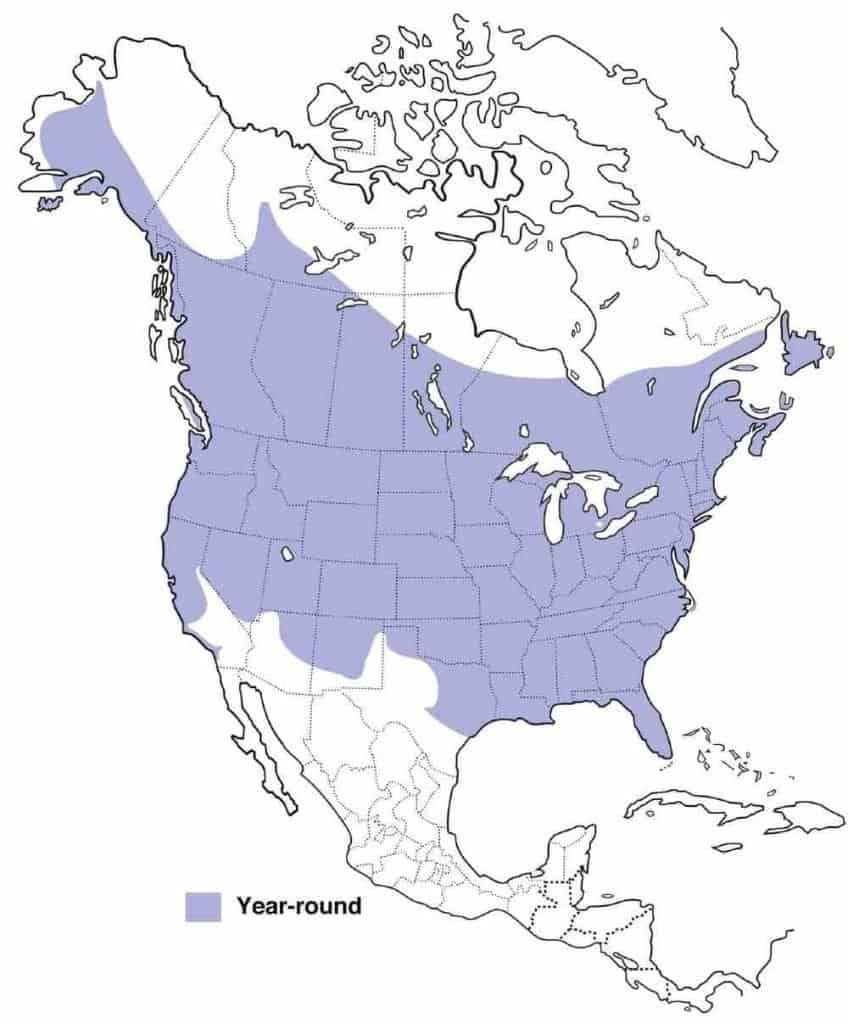
Downy woodpeckers are year-round birds that live throughout the contiguous United States, southern Alaska, and much of Canada. This bird does not migrate.
Appearance
Downy woodpeckers are small birds 6″ – 7″ long with a wingspan of 10″ – 12″.
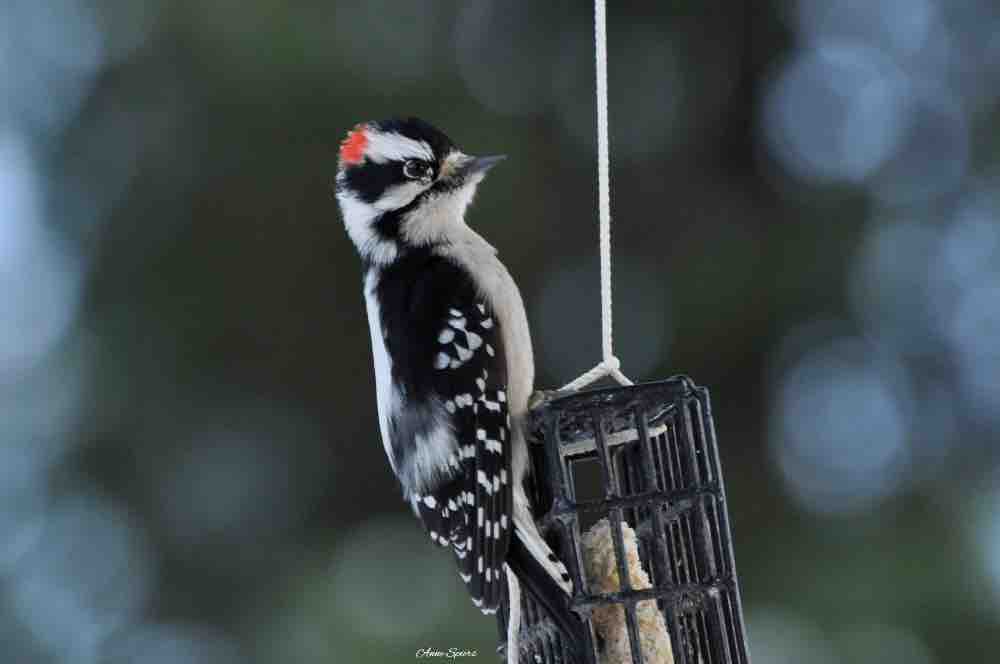
Many birds in the woodpecker family look similar but the downy woodpecker is pretty easy to distinguish – maybe because they are the smallest of the woodpecker family.
Males are tuxedo black with a white stripe on the back, white belly, white outer tail feathers, some spotted areas of white on the wings, a yellow/tan spot above the beak, and the infamous red patch at the back of its crown.
Along the Pacific coast, this bird’s belly is light-brown rather than white.
The tail is stiff to help brace the bird much as it clings to tree branches and the beak is short and stubby.
Like all woodpeckers, the downy has a long barbed tongue to pull insects out of tiny places.
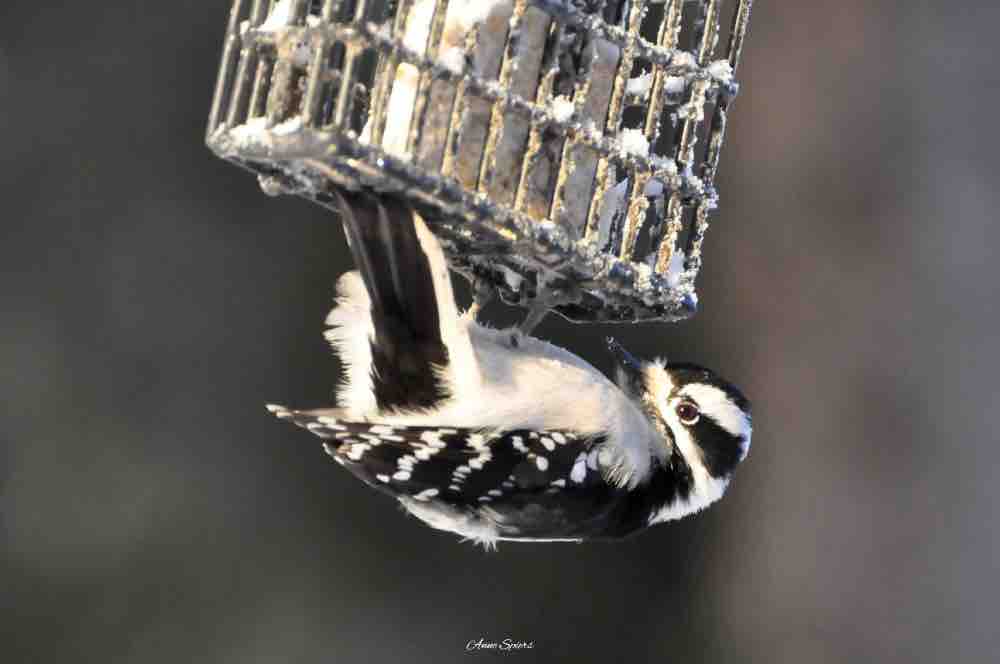
Females are nearly identical without red coloring.
Some of the juvenile downy woodpeckers will have a small red spot on the head.
The hairy woodpecker has almost identical colors and is sometimes confused with the downy woodpecker. The differences are the hairy woodpecker is about 3″ larger (which is significant in the bird world) and has a wedge-shaped beak which is also much longer than the downy’s.
Habitat
Downy woodpeckers are commonly found anywhere there are trees – even in our backyards!
Trees often provide a key source of their favorite food – insects! These sweet little woodpeckers love to dine on beetles, ants, gall wasps, caterpillars, and even ticks (hello natural tick control!).
The downy woodpecker is commonly seen feeding amongst a flock of mixed species including chickadees, titmice, and nuthatches.
Diet & Feeding Behavior
In the wild, the downy woodpecker feeds on insects (especially grubs & spiders) and fruit from trees/shrubs such as mulberry and dogwood. They also favor the fruit of everyone’s favorite plant – “poison ivy”.
When seeking insects the downy will drill into large trees to find them as well as forage closer to the ground, on large stalky weed plants.
This bird also regularly dines on plant galls. (Plant galls are found on leaves, twigs, roots, or flowers of many plants and are essentially where insects lay their eggs and feed them so they can grow.)
Many a downy woodpecker has been coaxed to feed on bird feeder fare as well but the majority of their diet is comprised of insects – about 75%.
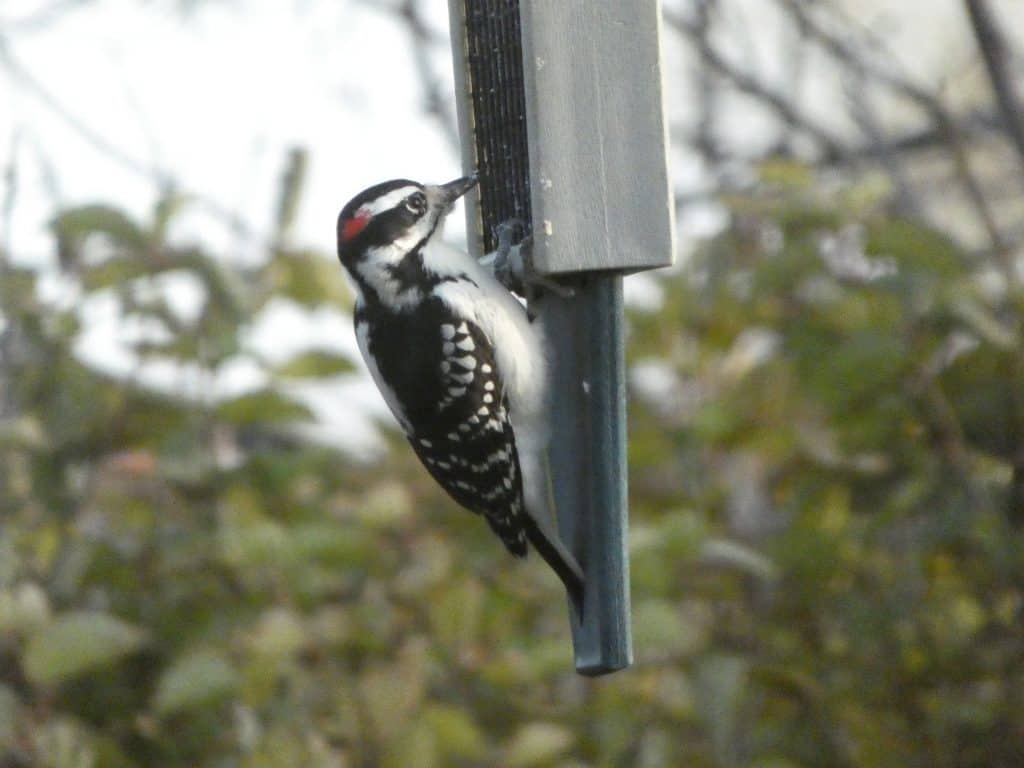
Sounds
Nesting, Eggs & Fledglings
The couple will nest in a cavity – either excavate a hole in a tree trunk or move into a nesting box mounted on a tree or pole. They do not use any nesting material.
They generally have only one brood per year consisting of 3-6 all-white eggs.
According to The National Park Service, there have been reports of downy woodpecker couples having two broods in a year in the southern part of its range. This is likely because food is available longer in the southern regions.
The pair take turns incubating the eggs for 11-12 days, the female incubates during the day and the male at night. Both parents feed the young.
Check out this adorable downy woodpecker juvenile wondering where mom went.
After 20-25 days post-hatch the young will fledge. The following spring these fledglings will become parents of their own.
Predators
Downy woodpeckers can fall prey to other birds including the American Kestrel, the Sharp-shinned Hawk, and the Cooper’s Hawk.
They also need to watch out for black rat snakes as they prey on downy eggs and nestlings. The same goes for flying, red, and eastern grey squirrels.
Generally, the cavity opening is small enough to protect against all prey except snakes.
Five Simple Ways to Attract Downy Woodpeckers to Your Yard
1. Offer feeder food they love

During the fall and winter months, your chances of luring a downy woodpecker to your yard increase dramatically as their favorite food choice (insects) become scarce. However, many people offer bird food year-round and regularly see this woodpecker visit their yard.
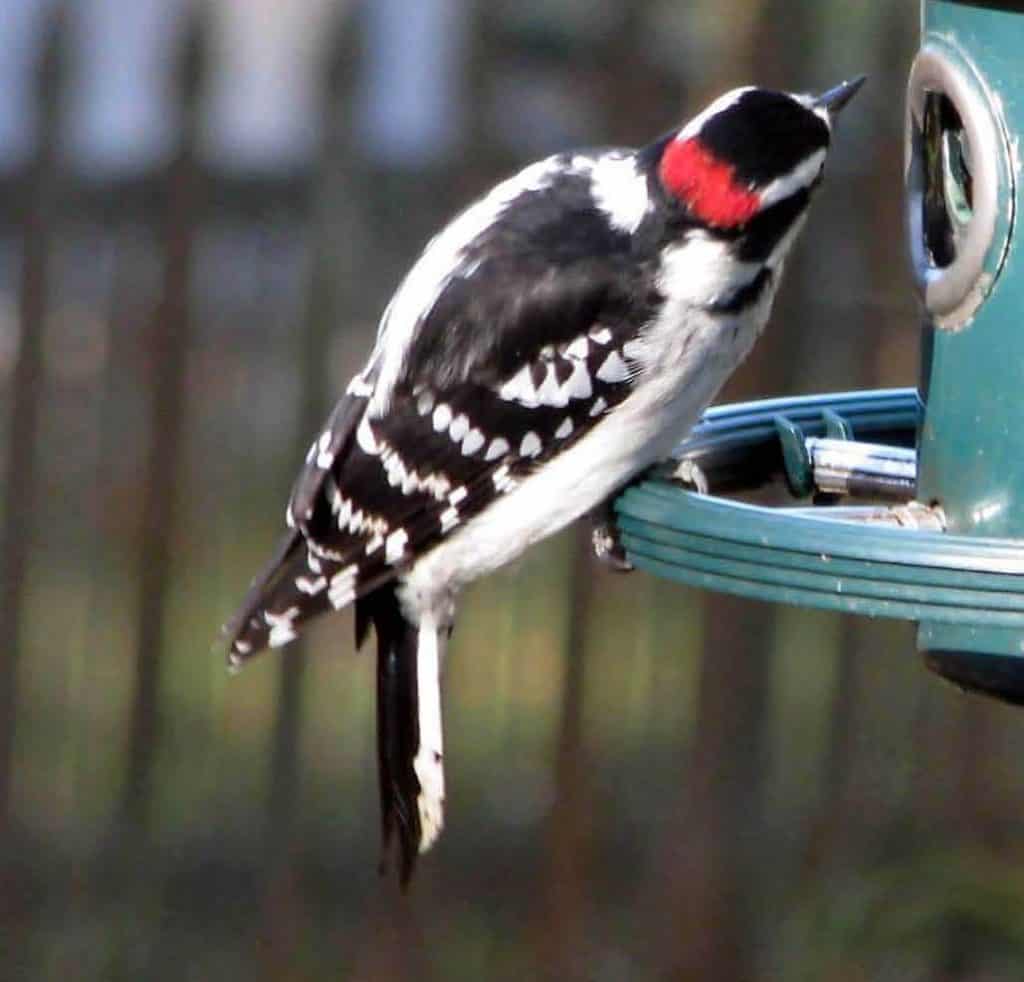
Of all the bird food people offer at the feeder, time and time again the same few types keep emerging as the most popular for enticing this bird. In order of having the greatest success they include:
- Suet
- Peanut butter spread
- Sunflower seeds
- Safflower seeds
- Seed mixes
- Peanuts
- Corn
- Fruits
- Sugar water nectar
2. Plant fruit-bearing trees & shrubs
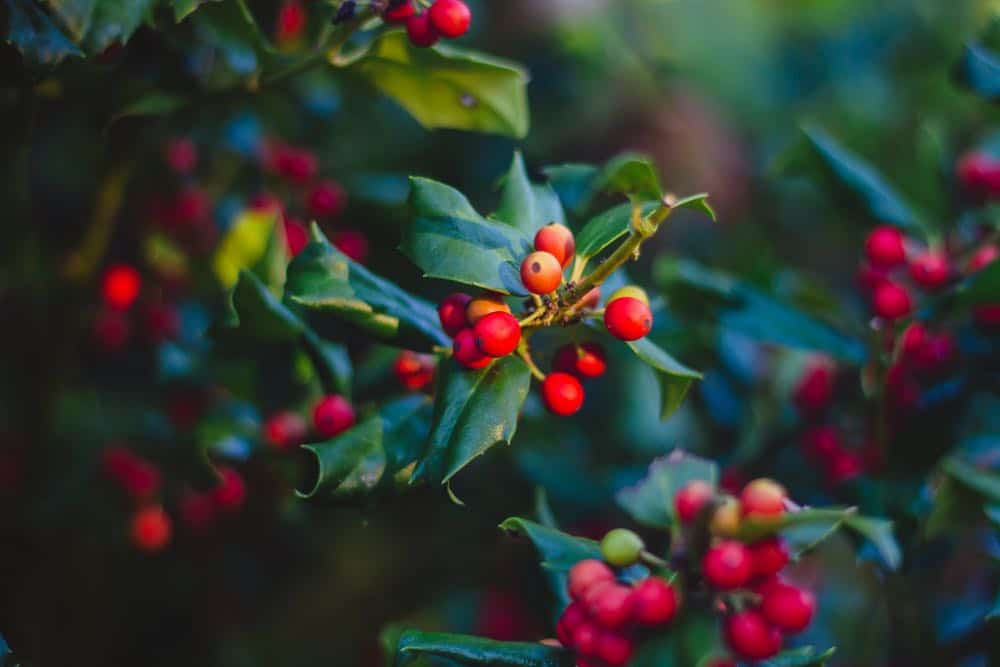
Although not something you can offer immediately, planting fruit trees and shrubs in and around your yard will pique the interest of a nearby downy woodpecker and effortlessly provide food year after year. Try planting some of these fruit-bearing plants:
- Greenbrier
- Hackberry
- Sassafras
- Blackberries
- Sumac
- Holly
- Dogwood
- Persimmon
- Elderberry
They also dine on poison ivy but I don’t recommend purposely planting this in or around your yard!
3. Have water available
Attract downy woodpeckers with water. All birds need water to drink and bathe in and downy woodpeckers are no different. If a natural source of water is not available nearby consider installing a pond – even a small patio pond will attract wild birds.
A birdbath is another viable option. Birds are drawn to moving water so adding a fountain to the birdbath could increase your chances of attracting one.
4. Hang a nesting box
It’s unusual and unlikely a downy woodpecker will nest in a man-made nestbox. However, they have been known to roost in them (i.e. chill out, relax, and sleep).
As a general rule, hang the nest box in the interior of your wooded area and pack it tight with sawdust enabling some matter for the woodpecker to excavate.
Attach guards to deter nest-raiding predators.
5. Go organic
Avoid using chemicals in and around your yards such as grass fertilizer and pesticides. If you want to attract downy woodpeckers ensure their primary source of food (insects) is in good supply. If you kill them off with chemicals, there won’t be any to eat.
Equally horrible would be death by poisoning in the case of a wild bird eating a toxic insect!
Next Steps
I think you’ll agree these adorable woodpeckers are worth the effort to attract to your yard. Take and apply some of the tips I provided or if you’re really serious about attracting them to your yard – apply all of them! Good luck and happy birding!
Frequently Asked Questions
How can I tell the hairy woodpecker and downy woodpecker apart?
The hairy woodpecker and downy woodpecker are nearly identical except the hairy is bigger by about 3″ and the downy’s beak is much smaller. In fact, the hairy woodpecker’s beak is roughly 1/2 the length of its head whereas the downy’s beak is about 1/4 – 1/3 the size of its head.
Save to Pinterest for later ->

